The Chukar, also known as the Chukar Partridge, is a species first introduced into North America from India in 1893. Since then they have flourished, particularly in the Great Basin of the American west where the largely feed on the seeds and leaves of cheat grass.
Antelope Island in the Great Salt Lake provides perfect habitat for them and they abound there.
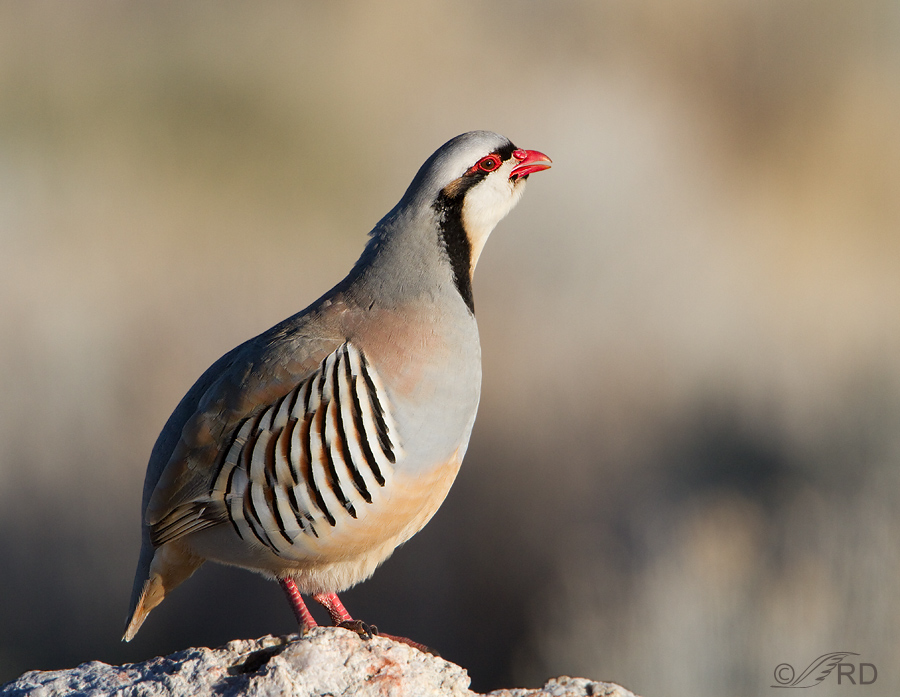
Chukar calling
In the springtime there are times when the hillsides sound like the island has been overrun by domestic chickens from the calling of the Chukars.
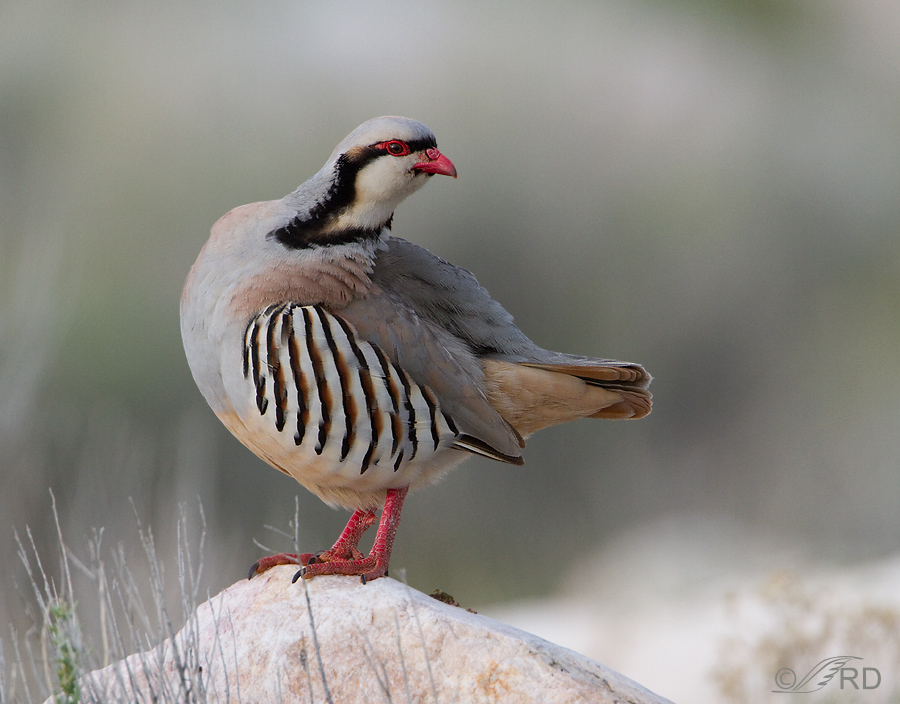
Preening on a rock perch
Chukars are very prone to perch on rocks – especially in the spring. While there they call to other birds and preen. Sentinel birds of a flock also prefer elevated perches while on lookout, which of course is ideal for the bird photographer.
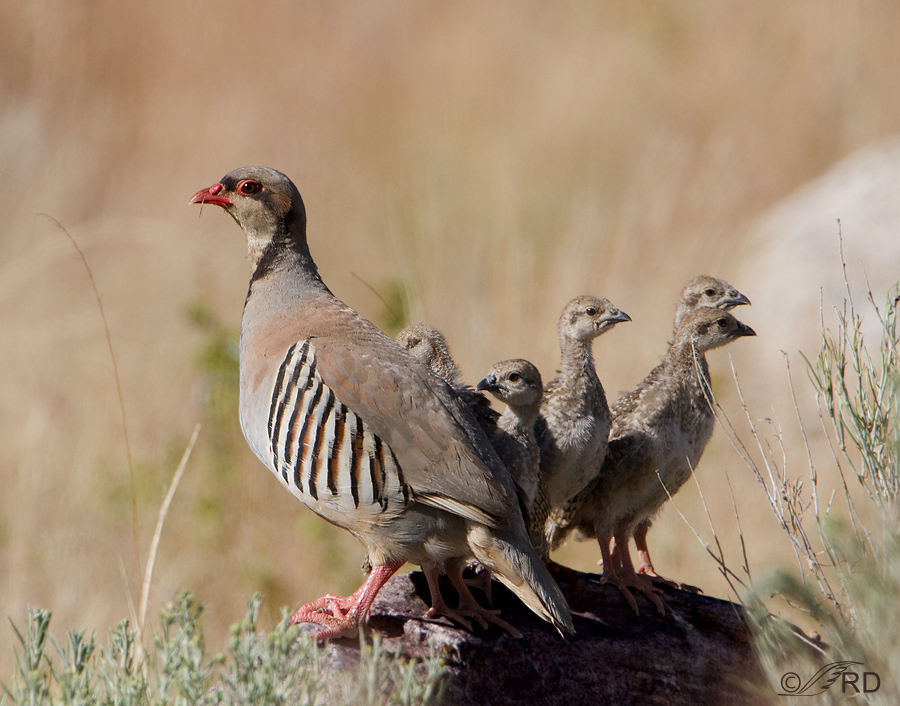
Parent with chicks
And here’s one of the reasons there’s so many Chukars on Antelope Island – the breed prodigiously. Clutch size can be up to 21 eggs!

Chukar covey on boulder
In late summer and fall Chukars often congregate in large groups. These coveys tend to consist of adults and their offspring but several family groups may mix together.
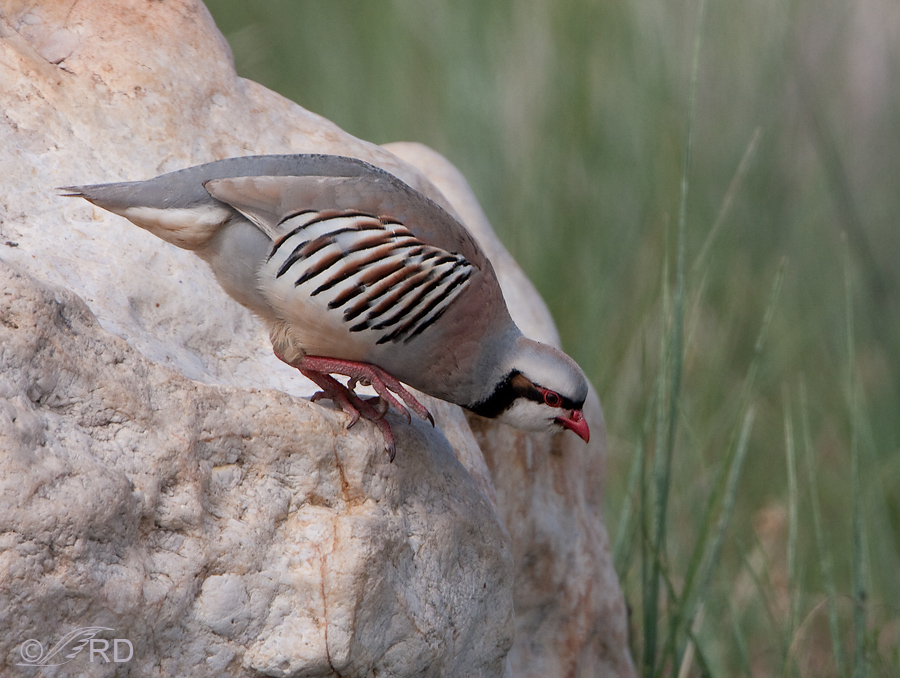
Preparing to jump off the rock
Like some other upland game birds, Chukars are often reluctant to fly. They will typically jump down from their perch and scurry through the vegetation to hide. They are very fast runners and easily outrun a human on foot.
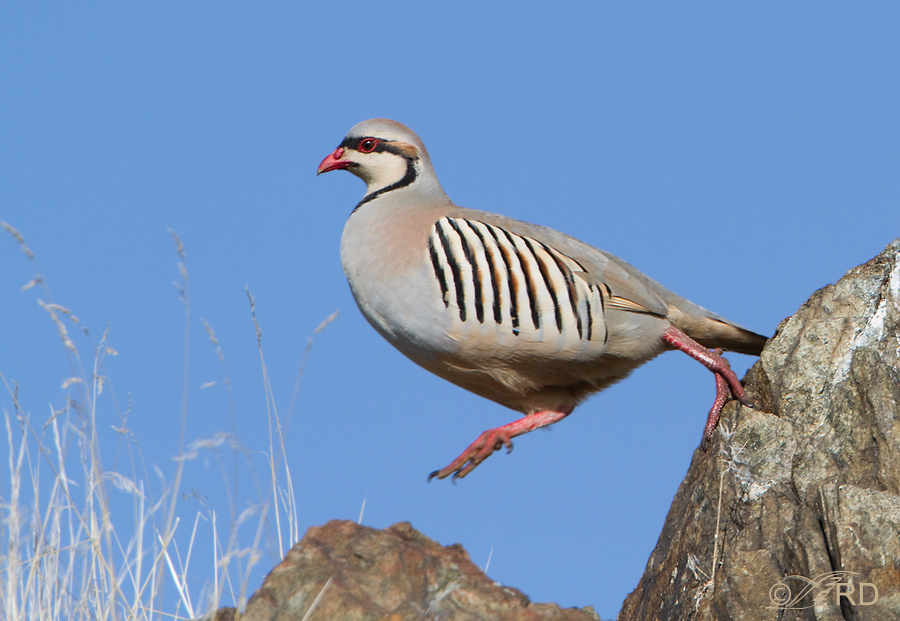
Rock hopping
I’m often tempted to call these birds “rockhoppers” because of their tendency to hop from rock to rock, typically without even opening their wings in the process.
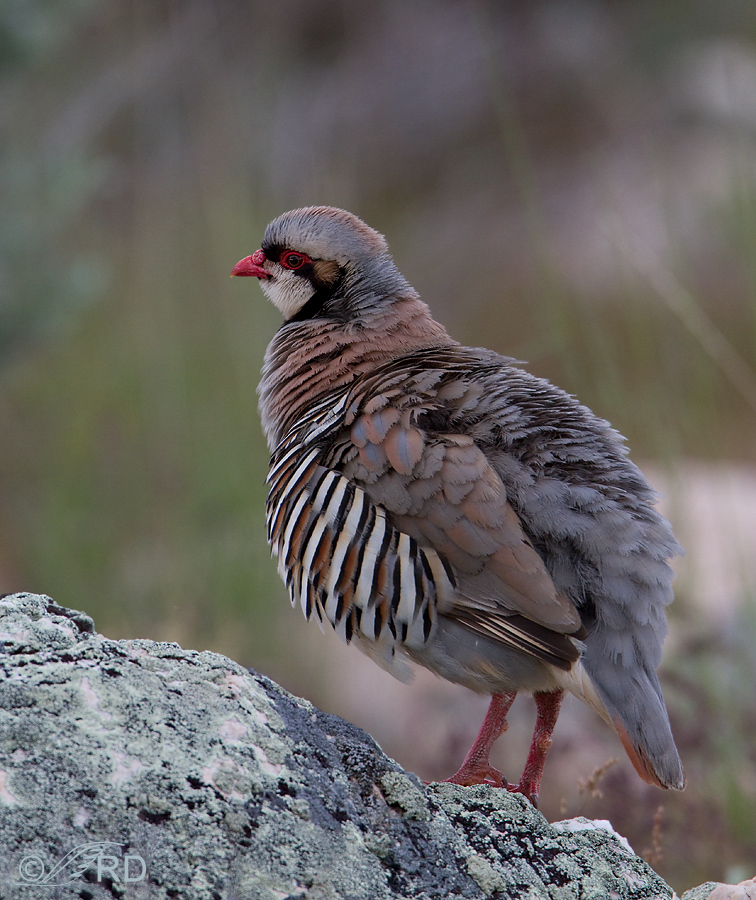
All fluffed up
I think Chukars are unusually handsome birds and I enjoy photographing them. Photographers should note that they are most easily approached in the springtime when paired up and more reluctant to leave their mate.
Ron


Doug,
Sure, I’d be delighted to play a small part in teaching biology at Highland HS again without having to put up with the peripheral BS that you’re still dealing with. I still miss the kids a lot and even some of you guys if you can believe that… But I’m truly having a blast with my bird photography.
Very good to hear from you again. Make sure the stories you tell in class are true and not embellished (not that you’d have to). Hope you and the kids enjoy the photos.
Ron
Dudley,
Wow, these are amazing photographs. May I, with your permission use these photos for school? I’m not teaching zoology anymore. I sold it to a new teacher for some Chinese food- a choice which I am now regretting. However, I still talk about birds in my biology classes and would love to use your amazing photos. I will also make sure to tell all the wonderful stories I know about the photographer. You know, fish in the vent, muratic acid under the door… etc.
I really am impressed and somewhat envious of what you have done with your zoological knowledge and your apparent passion for nature and your talent in photography. And I have to admit, I am even proud to have worked with you.
Thanks,
Doug
I do nature photography as well and your photos are first class !!!
Send some down my way, Ron. I’ve still never seen one in the wild.
A very informative series on this species Ron and the images are, as usual, superb. I can see why you like photographing these birds, especially looking at the color of the puffed-up fellow in the last image.
WOW—Marie and I couldn’t believe our eyes, so we kept looking at the great photo’s until we could believe our eyes.